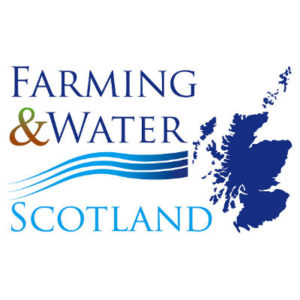Making the most of your land – Renewables, Woodlands & GAEC, Event summary
9 November 2017With the current Brexit situation and uncertain red meat markets, farmers need to explore how to ‘Make the most from their land’. By maximising output from your farmland, you can improve your business profitability and reduce your carbon footprint. The topics explored at this meeting included farm woodlands, renewable energy and ensuring compliance with GAECs.
Sixteen local land managers attended the meeting to hear presentations from Woodland Consultant Douglas Priest and Renewables Consultant John Farquhar on ways in which farm businesses can diversify. Douglas’ presentation slides are available to read here & John’s presentation about renewables is available here.
During the afternoon session, Hamilton Brothers and Bomford gave a joint demonstration of Bomfords Flailbot. The Flailbot can be used to help manage areas of bracken and whins, both of which are invasive and will reduce the available grazing area of grassland. By managing these species effectively farm managers can improve their output from grass and reduce reliance on additional feedstuffs.
Main take home messages
- Well designed woodlands such as shelterbelts can have minimal impact to, and even result in improvements to how the farm is run practically. Benefits can include improved cashflow, tax relief, and increasing (growing) asset, diffuse pollution mitigation, ground stabilisation, shelter & improvements in infrastructure (roadways and fences).
- Renewable grant incentives (e.g. Feed In Tariffs (FiTs)) are reducing, however the viability of such schemes can be very much site specific – the benefit may no longer be a large subsidy
 payment, but rather a significant reduction in energy cost.
payment, but rather a significant reduction in energy cost. - Support payments (particularly BPS, LFASS & AECS) are a large part of most farm business incomes. Ensuring all GAECS, SMRS & cross compliance regulations are adhered to is crucial to maximise this income source.
- Although the Tayvallich area is not within one of SEPA’s diffuse pollution priority catchments, there General Binding Rules still apply and keeping on the right side of them can have benefits to the farm business which include improved biosecurity and nutrient management. Further information on how to reduce diffuse pollution on your farm is available at Farming And Water Scotland
Downloads related to the topics discussed at the meeting are available below.![]()
Very often slight changes in management can result in improved productivity on your farm, leading to increased profitability and a reduced carbon footprint. Read what changes other farmers have made at Farming For a Better Climate.
- Technical Note (TN665) – Alternative watering for field grazed livestock I – Abstraction systems
- Topics: Water Management
- Technical Note (TN665): Alternative Watering for Field Grazed Livestock I – Abstraction Systems
- This technical note presents two different abstraction point designs to supply an alternative watering system, based on findings from Scottish Government funded trial work on three farms in Scotland.
- Topics: Water Management and Livestock
- GAEC 1 – Buffer strips along water courses
- The aim of GAEC 1 rules is to protect water against pollution and run-off.
- Topics: Rural Business
- GAEC 2 – Abstraction of water for irrigation
- The aim of GAEC 2 rules is to protect water resources by licensing abstraction of water for irrigation.
- Topics: Rural Business
- GAEC 3 – Protection of groundwater against pollution
- The aim of GAEC 3 rules is to protect groundwater against pollution.
- Topics: Rural Business
- GAEC 4 – Minimum soil cover
- The aim of GAEC 4 rules is to protect soil against erosion after harvest until the end of winter (winter is up to and including the last day of February).
- Topics: Rural Business
- GAEC 5 – Minimum land management reflecting site specific conditions to limit erosion
- The aim of GAEC 5 rules is to protect soil against erosion in certain situations.
- Topics: Rural Business
- GAEC 6 – Maintenance of soil organic matter
- The aim of GAEC 6 rules is to maintain soil organic matter levels.
- Topics: Rural Business
- GAEC 7 – Retention of landscape features
- The aim of GAEC 7 rules is to protect landscape features.
- Topics: Rural Business
- SMR 10 – Restrictions on the use of plant protection products
- The aim of SMR 10 rules is to ensure that plant protection products are used correctly and to minimise their risk to humans, animals and the environment.
- Topics: Rural Business
- SMR 2 – Conservation of wild birds
- The aim of SMR 2 rules is to protect wild birds; if you have land classified as a Special Protection Area (SPA), the aim is also to protect their eggs and nests.
- Topics: Rural Business
- SMR 3 – Conservation of flora and fauna
- The aim of SMR 3 rules is to conserve land designated as a Special Area of Conservation (SAC).
- Topics: Rural Business
- SMR 4 – Food and feed law
- The aim of SMR 4 rules is to ensure the safe production of food for human consumption and food or feed that is fed to food-producing animals.
- Topics: Rural Business
- SMR 7 – Cattle identification and registration
- The aim of SMR 7 rules is to maintain a system for the identification, registration and traceability of cattle.
- Topics: Beef Cattle, Dairy Cattle, New Entrants, Livestock and Rural Business
- SMR 11 – Welfare of calves
- The aim of SMR 11 rules is to protect the welfare of calves by setting minimum standards for their care and husbandry.
- Topics: Rural Business
- SMR 13 – Welfare of farmed animals
- The aim of SMR 13 rules is to protect the welfare of farmed animals by setting minimum standards for their care and husbandry.
- Topics: Rural Business
Sign up to the FAS newsletter
Receive updates on news, events and publications from Scotland’s Farm Advisory Service


